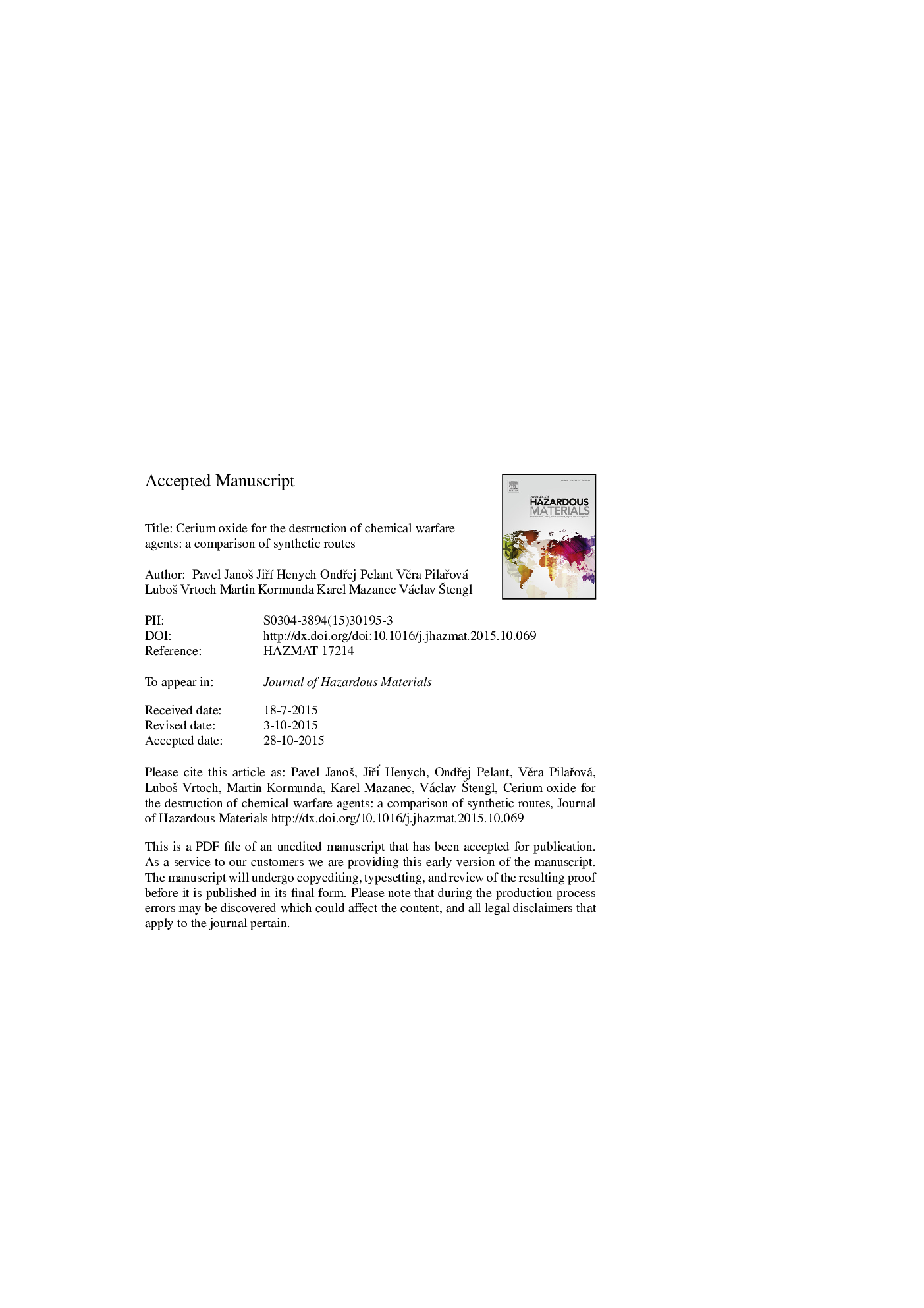| Article ID | Journal | Published Year | Pages | File Type |
|---|---|---|---|---|
| 575481 | Journal of Hazardous Materials | 2016 | 30 Pages |
Abstract
Four different synthetic routes were used to prepare active forms of cerium oxide that are capable of destroying toxic organophosphates: a sol-gel process (via a citrate precursor), homogeneous hydrolysis and a precipitation/calcination procedure (via carbonate and oxalate precursors). The samples prepared via homogeneous hydrolysis with urea and the samples prepared via precipitation with ammonium bicarbonate (with subsequent calcination at 500 °C in both cases) exhibited the highest degradation efficiencies towards the extremely dangerous nerve agents soman (O-pinacolyl methylphosphonofluoridate) and VX (O-ethyl S-[2-(diisopropylamino)ethyl] methylphosphonothioate) and the organophosphate pesticide parathion methyl. These samples were able to destroy more than 90% of the toxic compounds in less than 10 min. The high degradation efficiency of cerium oxide is related to its complex surface chemistry (presence of surface OH groups and surface non-stoichiometry) and to its nanocrystalline nature, which promotes the formation of crystal defects on which the decomposition of organophosphates proceeds through a nucleophilic substitution mechanism that is not dissimilar to the mechanism of enzymatic hydrolysis of organic phosphates by phosphotriesterase.
Related Topics
Physical Sciences and Engineering
Chemical Engineering
Chemical Health and Safety
Authors
Pavel JanoÅ¡, JiÅà Henych, OndÅej Pelant, VÄra PilaÅová, LuboÅ¡ Vrtoch, Martin Kormunda, Karel Mazanec, Václav Å tengl,
